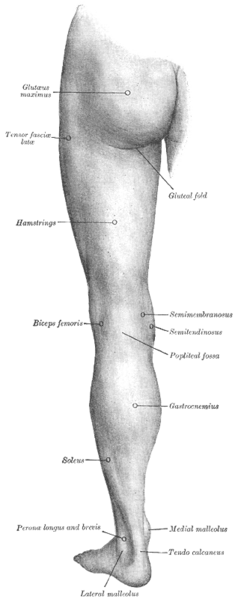The hamstring muscle group is comprised of three muscles: the semimembranosus, semitendinosis and the biceps femoris.
The biceps femoris has two muscle heads, the long head and the short head. The semitendinosus and semimembranosus have attachments points at the ischial tuberosity (sitz bones) and the tibia; the long head of the biceps femoris attaches at the ischial tuberosity and fibula, and the short head of the biceps femoris attaches at the femur and fibula.
Many people associate the hamstring muscle group with flexion (bending) at the knee joint, however, the hamstring has more than one job. It’s less thought of, more integrated job is to provide stability at the pelvis. It does this by posteriorly tilting the pelvis, and works with the anterior hip muscles to keep the pelvis neutral.
This matters for a couple of reasons. If the pelvis isn’t neutral and is anteriorly rotated, the hamstring attachment points will be far away from each other (see picture below).

When the pelvis is anteriorly rotated, the hamstrings aren’t providing the stability they should. Sometimes, people with this position will experience “tightness.”
Remember, this is a muscle that is not providing the stability it should because of its position. If you forcefully stretch an already lengthened hamstring, you run a risk of further destabilizing the pelvis.
In this situation, focusing on the “bandhas,” or energy locks that are often referred to in yoga can improve strength of the deep abdominals and assist with moving the pelvis into a more neutral position. This will allow the hamstrings to have a better position (the attachment points will move closer together) and improve mobility in the hip without the practitioner forcing it.
Sometimes the pelvis is neutral, but the hamstring muscle group is actually short. It might have trigger points (hot spots that are sore when pressure is applied) or it might restrict movement in the hip.
In this case, it is important to check for strength and mobility in the rest of the thigh muscles and encourage balance in the practitioner. This needs to be done in conjunction with strengthening what is weak.
Tightness exists for a reason, and stretching can lead to a decrease in overall stability if no one looks at why the muscle group is tight in the first place.
On a mat where hamstring flexibility dictates an expression of a posture (and hamstring strains are all too common), what can be done? Emphasize deep core stability by keeping the lower ribs down and engaging uddiyana bandha and mula bandha. This is critical for the overall safety of the practitioner.
If a teacher notices the class having a difficult time with this technique, they should take the time to teach the class how to do it.
Practitioners who don’t know how to engage the deep course musculature, should ask their teachers for guidance.
The other piece to hamstring safety and flexibility is strength. It is important to activate the hamstrings in postures such as bridge pose and the warrior postures to maintain a stable pelvis.
If we take the time to focus on deep core strength and hamstring strength, our flexibility will slowly come.
Love elephant and want to go steady?
Sign up for our (curated) daily and weekly newsletters!
Apprentice Editor: Lizzie Kramer / Editor: Rachel Nussbaum
Photo: Courtesy of Wiki Commons/Nina Mel and Wiki Commons/Henry Gray












Read 0 comments and reply